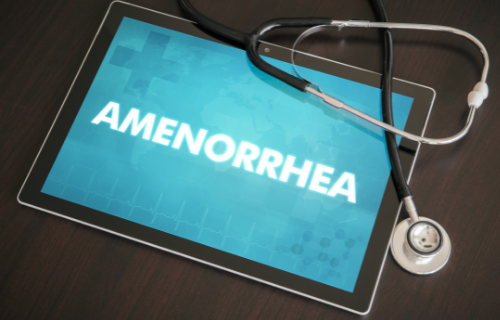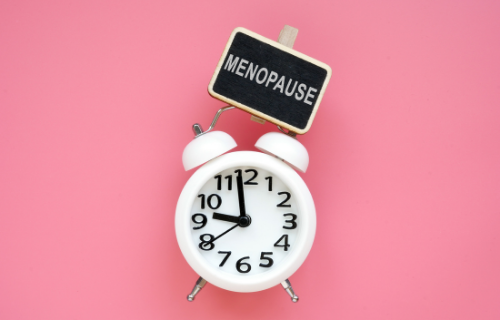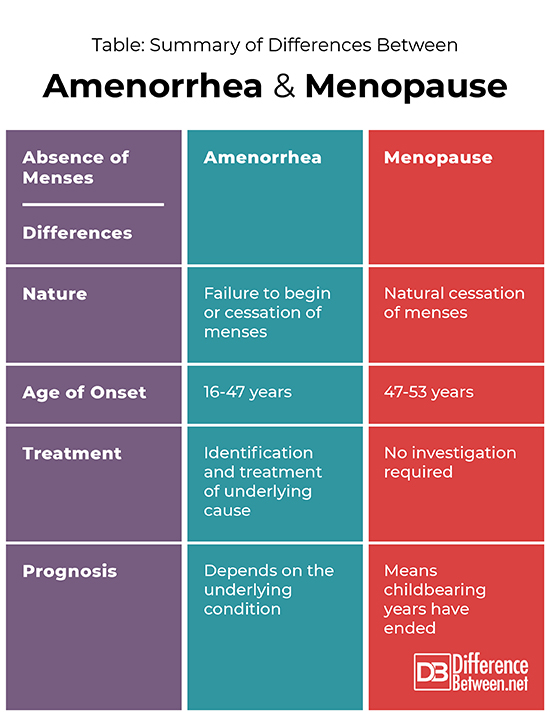The Difference Between Amenorrhea and Menopause

Definition
Both amenorrhea and menopause refer to the failure of ovulation and therefore the absence of menses. They differ in terms of the extent to which they are considered natural, the age of onset, the underlying causes, and the treatment required.
Causes
Menopause is a consequence of decreased hormone production by the ovaries. It is the final cessation of ovulation and for most women occurs between the ages of 47 and 53 years. The Mayo Clinic defines amenorrhea as the absence of a menstrual period in a woman of reproductive age (12-15 and 47-53 years) that cannot be explained by pregnancy, breastfeeding, or menopause.
David Klein and Poth differentiate between primary and secondary amenorrhea.
- Primary amenorrhea is the absence of menses in a woman by the age of 16 due to chromosomal or genetic anomalies and/or developmental delays and/or injury.
- Secondary amenorrhea is the absence of menses for three months in a woman with a previously normal menstrual cycle or six months for a woman with an irregular menstrual cycle.
The causes of secondary amenorrhea include physiological, psychological, and/or lifestyle factors, as well as being the side-effect of some drugs and medications.
- Physiological factors include premature menopause, changes in the functioning of the hypothalamus, and shifts in a woman’s hormonal balance. It may signal polycystic ovary syndrome, thyroid malfunction, a pituitary tumor, and even intrauterine scar formation.
- Psychological factors include eating disorders such as anorexia nervosa. According to G. Castellini et al., 66-85 percent of patients with anorexia nervosa suffer from amenorrhea due to restricted food intake and being underweight.
- Lifestyle factors such as low body weight and excessive exercise may also cause amenorrhea (J. L. Chan et al.) Women who exercise vigorously on a regular basis and lose a significant amount of weight are at risk of developing hypothalamic (or ‘athletic’) amenorrhea.
- Medications may also cause amenorrhea, for example, contraceptives, the regular use of opiates such as heroin, the antipsychotic drugs used to treat schizophrenia, and some medications for depression and blood pressure (F.J. Santen et al).

Symptoms
For some women, the decrease in estrogen production in menopause presents with hot flashes, sleep disturbances, and vaginal atrophy and dryness. Cognitive and affective disturbances may also be apparent. Benjamin Saddock and Saddock note that while some women may become depressed about no longer being able to bear children, many women report an increased sense of wellbeing because it gives them opportunities to pursue the dreams that were put on hold.
Primary amenorrhea presents as the failure to begin menses after the age of 16. Secondary amenorrhea presents as an interruption of menses that is not due to pregnancy, breastfeeding, or menopause. Associated symptoms of secondary amenorrhea can include headaches, vision changes, nausea, extra facial hair, hair loss, changes in breast size, and a milky discharge from the breasts.
Treatment
Menopause is a natural condition that does not usually require specific treatment; likewise, the absence of menses during pregnancy and breast feeding. The failure to menstruate at any other point warrants attention because the underlying condition causing amenorrhea may prove life threatening.
Amenorrhea itself is not usually harmful to a woman’s health, and menses returns if the underlying conditions are addressed. Treatments may include surgical correction, for example, removing uterine scar tissue or a pituitary tumor. Hormonal imbalances can be treated with hormone therapies. Anorexia nervosa is treatable with psychotherapy (Andrea Kass et al.) Lifestyle factors can be addressed by eating more and decreasing the amount and intensity of exercise, and amenorrhea due to medication can be treated by stopping the medication.
Table: Summary of differences between Amenorrhea and Menopause

Summary
Amenorrhea is the failure of a woman’s menstrual cycle to start by the age of 16 and the unexpected cessation of menses during a woman’s reproductive years, whereas menopause is the natural and expected cessation of menses between the age 47 and 53 years. While women suffering from amenorrhea would find it difficult to fall pregnant, the condition is not considered a medical emergency once the underlying condition is identified and treated. Treatment includes surgical, hormonal, and psychological strategies and/or lifestyle changes.
FAQ
What is amenorrhea?
Amenorrhea is the failure to begin menstruating or the unexpected cessation of menses during a woman’s reproductive years.
What is the cause of amenorrhea?
Primary amenorrhea, or the failure to menstruate before age 16 may be the result of congenital defects and developmental delays and/or injuries. Secondary amenorrhea may reflect underlying medical, pharmacological, hormonal, psychological, and lifestyle conditions.
What happens to your eggs when you have amenorrhea?
When a woman suffers from amenorrhea the eggs or ova dissolve.
How long can amenorrhea last?
Amenorrhea due to the menopause will last the rest of a woman’s life. Primary amenorrhea is most often a life-long condition, for example, chromosomal abnormalities like Turner’s syndrome. Secondary amenorrhea persists for as long as the underlying condition does. For example, where amenorrhea is the result of taking contraceptives, return of menses occurs from a few weeks to six months (Healthline). However, secondary amenorrhea can also be a life-long condition, for example, if amenorrhea due to excessive exercise or weight loss occurs early in life, menses may not return, and the woman may not be able to fall pregnant even with the help of drugs.
What is the fastest way to cure amenorrhea?
While some cases of primary amenorrhea can be cured with surgery, menopause is not curable and likewise amenorrhea due to chromosomal and genetic anomalies. The time it takes to cure secondary amenorrhea depends on successful treatment of the underlying cause.
What are the effects of not getting your period?
The consequences of a woman not having her period include difficulty falling pregnant.
- Difference Between Ecchymosis and Erythema - August 15, 2022
- Difference Between Autobiographical Memory and Episodic Memory - August 1, 2022
- Difference Between Biological Drive and Social Motive - July 30, 2022
Search DifferenceBetween.net :
Leave a Response
References :
[0]Castellini G., et al. "Predictors of Resumption of Menses in Anorexia Nervosa: A 4-Year Longitudinal Study." Psychosomatic Medicine, vol. 82, 2020, pp. 782-786. https://doi.org/10.1097/PSY.0000000000000849
[1]Chan J. L. et al. "Differential regulation of metabolic, neuroendocrine, and immune function by leptin in humans." Proceedings of the National Academy of Sciences of the United States of America, vol. 103, no. 22, pp. 8481–6. https://doi.org:10.1073/pnas.0505429103
[2]Healthline. "Secondary amenorrhea: what causes secondary amenorrhea." May 17, 2014. https://www.healthline.com/health/menstruation-absent
[3]Kass, Andrea et al. "Psychological treatments for eating disorders," Current Opinion in Psychiatry, vol. 26, no. 6, Nov 2013, pp. 549-555. https://doi.org:10.1097/YCO.0b013e328365a30e
[4]Klein, David A. and Merrily A. Poth. "Amenorrhea: An Approach to Diagnosis and Management." American Family Physician, vol. 87, no 11, 2013, Jun 1, pp. 781-788.
[5]Saddock, Benjamin James and Virginia Alcott Saddock. Kaplan and Saddock's Synopsis of Psychiatry, 9th edition, Lippincott Williams & Wilkins, 2003.
[6]Santen F. J. Sofsky J., Bilic N., Lippert R. (June 1975). "Mechanism of action of narcotics in the production of menstrual dysfunction in women." Fertility and Sterility, vol. 26, no. 6, pp. 538–48. https://doi.org/10.1016/S0015-0282(16)41173-8
